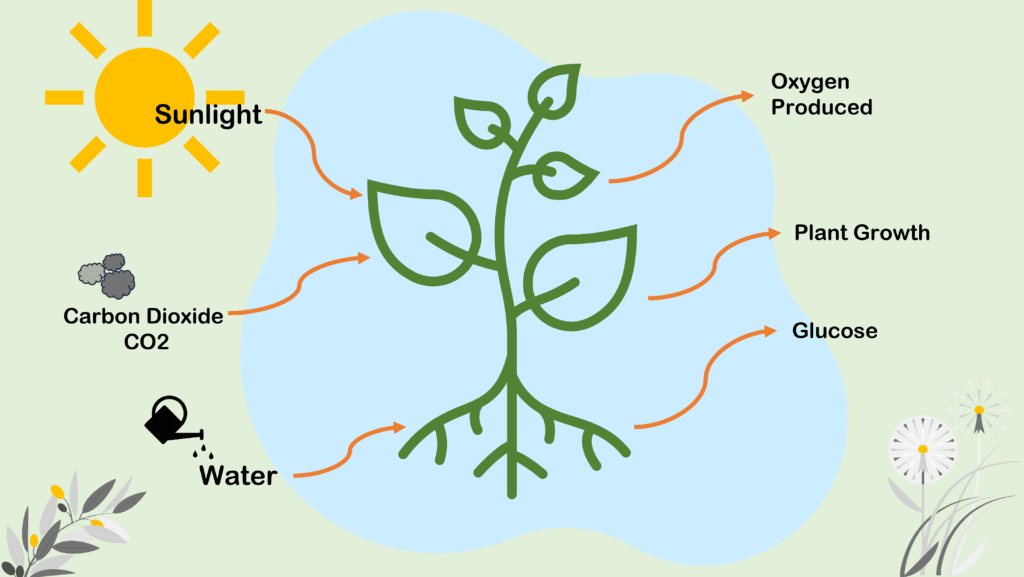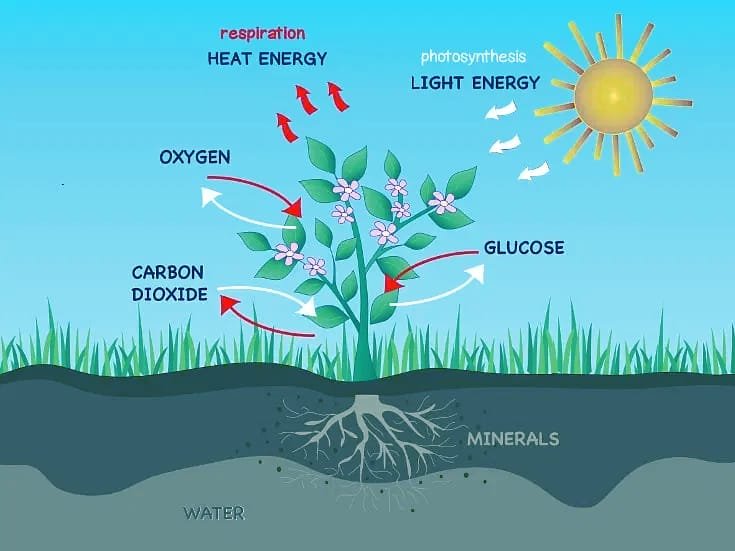What is Crop Physiology ?
Crop physiology is the study of plant functions that influence growth, development, and productivity. Key physiological processes, including photosynthesis, respiration, transpiration, and stress management, determine a plant’s ability to thrive in different environments. Understanding these functions helps in improving agricultural practices, maximizing yield, and ensuring food security. This comprehensive guide delves deeper into crop physiology, covering essential biochemical processes, genetic influences, stress adaptations, and modern agricultural applications.
Importance of Crop Physiology
1. Crop physiology is the study of plant functions that influence growth, development, and productivity.
2. Crop physiology helps in understanding key processes like photosynthesis, respiration, and nutrient uptake, which are essential for healthy crop growth.
3. Crop physiology plays a vital role in improving stress tolerance, enabling plants to survive drought, extreme temperatures, and diseases.
4. It aids in optimizing water and nutrient management, ensuring efficient resource use for better yields.
Table of Contents
1. Photosynthesis: The Basis of Plant Energy

Photosynthesis is the fundamental process by which plants convert light energy into chemical energy. This occurs in chloroplasts, primarily within the mesophyll cells of leaves.
1.1. Importance of Photosynthesis
- Essential for food production and biomass accumulation.
- Releases oxygen, maintaining atmospheric balance.
- Forms the foundation of the food chain.
- Regulates global carbon levels by reducing atmospheric CO₂.
1.2. The Process of Photosynthesis
Photosynthesis occurs in two major stages:
- Light-dependent reactions (occur in the thylakoid membrane)
- Capture sunlight using chlorophyll.
- Split water molecules, releasing oxygen.
- Generate ATP and NADPH for the next stage.
- Calvin Cycle (Light-independent reactions) (occur in the stroma)
- Uses ATP and NADPH to fix CO₂.
- Produces glucose, which serves as the primary energy source for plant metabolism.
1.3. Factors Affecting Photosynthesis
- Light Intensity: High intensity increases the rate of photosynthesis up to a saturation point.
- Carbon Dioxide Levels: Higher CO₂ concentration enhances glucose formation.
- Temperature: Optimal temperature supports enzyme activity, while extremes can inhibit photosynthesis.
- Water Availability: Essential for electron transport and maintaining cell turgor.
2. Respiration: Releasing Energy for Growth
Respiration is the process of breaking down glucose to release energy for metabolic functions. It occurs in the mitochondria and provides ATP for cellular activities.
2.1. Types of Respiration

- Aerobic Respiration: Uses oxygen to break down glucose, producing CO₂, water, and 36 ATP molecules.
- Anaerobic Respiration: Occurs in oxygen-deficient conditions, producing less ATP and byproducts like ethanol or lactic acid.
2.2. Importance of Respiration
- Provides energy for growth, reproduction, and nutrient transport.
- Facilitates cell division and tissue repair.
- Regulates metabolic processes necessary for survival.
3. Transpiration: Water Movement and Cooling
Transpiration is the process of water evaporation from plant surfaces, primarily through stomata.
3.1. Functions of Transpiration
- Cooling Effect: Prevents overheating by dissipating heat.
- Water Uptake: Creates a pull force for continuous water absorption.
- Nutrient Transport: Moves essential minerals from roots to leaves.
3.2. Factors Influencing Transpiration
- Environmental: High temperature and wind speed increase transpiration.
- Plant-based: Leaf size, stomatal density, and cuticle thickness regulate water loss.
- Soil Conditions: Adequate water supply supports efficient transpiration.
4. Plant Growth and Development
Growth occurs through cell division, elongation, and differentiation, regulated by both internal and external factors.
4.1. Role of Growth Regulators (Plant Hormones)
- Auxins: Promote cell elongation and root initiation.
- Gibberellins: Stimulate stem elongation and seed germination.
- Cytokinins: Encourage cell division and delay aging.
- Abscisic Acid (ABA): Helps in drought tolerance by inducing stomatal closure.
- Ethylene: Regulates fruit ripening and leaf senescence.
4.2. Environmental Influence on Growth
- Light Quality: Blue and red light spectra enhance plant development.
- Temperature: Affects enzyme activity and metabolic rates.
- Soil Conditions: Nutrient-rich, well-drained soil promotes healthy growth.
5. Stress Management in Plants
Plants experience various environmental stresses, including drought, extreme temperatures, and pest attacks.
5.1. Drought Stress Adaptation
- Stomatal Regulation: Reducing water loss by closing stomata.
- Deep Root Systems: Enhance water absorption from lower soil layers.
- Leaf Modifications: Thick cuticles and hairy leaves minimize evaporation.
5.2. Temperature Stress Management
- Heat Stress: Synthesis of heat shock proteins protects cellular structures.
- Cold Stress: Production of antifreeze proteins prevents ice damage.
5.3. Pest and Disease Resistance
- Physical Barriers: Tough leaves, thorns, and wax layers deter pests.
- Chemical Defenses: Plants release alkaloids and tannins to repel herbivores.
- Systemic Acquired Resistance (SAR): Activates defense genes in response to pathogens.
6. Nutrient Uptake and Transport
Plants absorb essential nutrients through their root systems and transport them via vascular tissues.
6.1. Essential Nutrients
- Macronutrients: Nitrogen (N), Phosphorus (P), Potassium (K), Calcium (Ca), Magnesium (Mg), Sulfur (S).
- Micronutrients: Iron (Fe), Zinc (Zn), Copper (Cu), Manganese (Mn), Boron (B).
6.2. Nutrient Deficiency Symptoms
- Nitrogen Deficiency: Yellowing leaves and stunted growth.
- Phosphorus Deficiency: Purplish discoloration and poor root formation.
- Potassium Deficiency: Weak stems and leaf scorching.
7. Crop Yield Improvement through Physiological Understanding
7.1. Enhancing Photosynthesis
- Using optimal plant spacing for sunlight exposure.
- Implementing CO₂ enrichment techniques in greenhouses.
7.2. Efficient Water Management
- Adopting drip irrigation systems.
- Using mulching to retain soil moisture.
7.3. Sustainable Soil Fertility Practices
- Applying organic compost and balanced fertilizers.
- Practicing crop rotation to replenish soil nutrients.
Conclusion
Understanding crop physiology is essential for improving agricultural productivity. By optimizing photosynthesis, respiration, nutrient uptake, and stress adaptation, farmers can enhance yield quality and sustainability. Advancements in crop physiology research continue to provide innovative solutions for global food security, ensuring resilient and efficient farming practices.
Frequently Asked Questions (FAQ)
Why is photosynthesis critical for crop growth?
Photosynthesis produces the energy required for all plant processes and food production.
How do plants manage water loss?
Plants close stomata, grow deep roots, and develop waxy cuticles to minimize water loss.
What are the symptoms of nutrient deficiency?
Deficiencies result in yellowing leaves, poor root growth, weak stems, and reduced yield.
Related Articles

